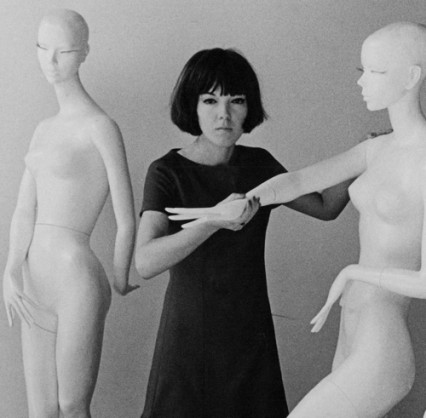
Mary Quant, 1963
These days the King’s Road looks not unlike many other high-streets across the country, albeit a bit posher. If you stroll down the road you’ll see, just like anywhere else, Boots, McDonald’s and the ubiquitous coffee-shop chains. In fact, always a trend-setter, the King’s Road was where Starbucks chose to open its first ever UK coffee-shop in 1998.
The Kings Road has earned its notoriety for setting rather more exciting trends than over-priced milky coffee of course and it was here that perhaps the most celebrated fashion-statement of the last century really took off – the mini-skirt.
Everybody knows that Mary Quant invented the mini-skirt. Except she didn’t. In reality nobody really knows for sure who produced the diminutive garment first. Some say it was John Bates, famous for dressing Diana Rigg in The Avengers so memorably. Others say it was the French designer Andre Courreges, although Quant would later write: “Maybe Courreges did do mini-skirts first, but if he did, no one wore them.”
There is no doubt that skirts were getting shorter each year in the early to mid-sixties but this was almost certainly to do with technological advances that enabled tights to be produced relatively cheaply than anything else.
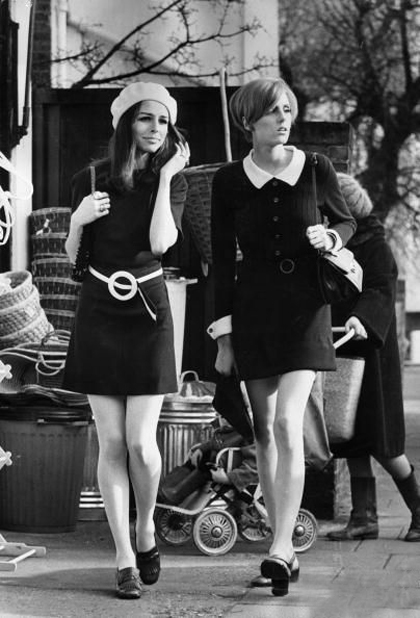
It is, however, almost universally accepted that Quant invented the word ‘mini-skirt’ after naming her version of the short skirt she was designing after her favourite car – the Mini. Even this isn’t exactly true as the Daily Express and other papers used the term in the 1920s to describe the relatively short skirts of the era. It is interesting to note that in Quant’s first autobiography ‘Quant by Quant’, published in 1966, the word ‘mini-skirt’ isn’t even mentioned.
Although it was the first British Starbucks that opened at 128 King’s Road in 1998 it wasn’t the first coffee shop that opened on the premises. This was the Fantasie coffee bar which opened at the beginning of 1955, admittedly a year or so after Gina Lollobigida opened the Moka espresso cafe at 29 Frith Street, but still one of the first coffee bars in London and certainly outside Soho.
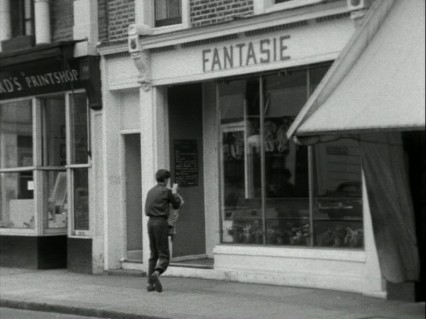
Fantasie coffee bar in 1955. A screen grab from the film Food for a Blush – released in 1959 but filmed in 1955/6
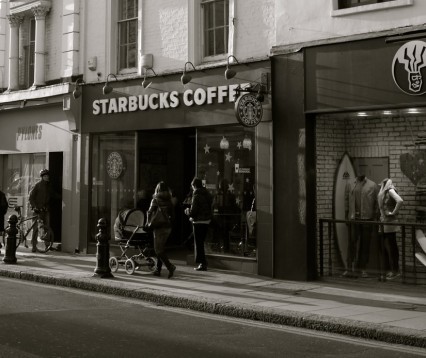
Starbucks on the King’s Road today
It was owned by an ex-solicitor called Archie McNair who lived above the cafe. He also had a photographic studio in the premises used by a young team of photographers one of whom included the young Anthony Armstrong-Jones later, of course, to become Lord Snowdon the husband of Princess Margaret.
It was at the Fantasie that McNair and his friends Mary Quant and her boyfriend Alexander Plunket Greene worked on a plan to open a boutique on the Kings Road. “It was to be a bouillabaisse of clothes and accessories…sweaters, scarves, shifts, hats, jewellery and peculiar odds and ends,” wrote Quant years later.
McNair initially had asked Quant and Plunket Greene to help him with starting up Fantasie but they declined both thinking that coffee bars were to be a flash in the pan. A decision they’d regret as it became crowded every night with a large group of young people who would become known as the Chelsea Set. In the evening vodka was occasionally and illegally added to the drinks and a local Chelsea-based band called the Chas McDevitt Skiffle Group regularly played there. Both of which contributed to the big success of the cafe.
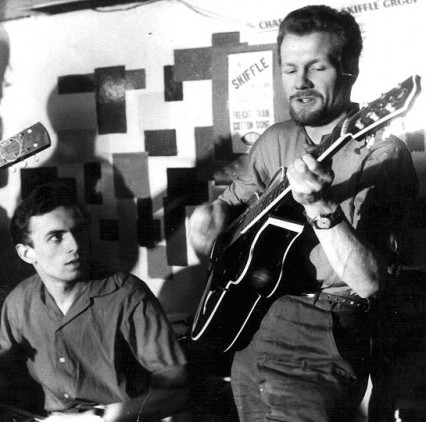
Chas McDevitt
Quant romantically wrote about the ‘Chelsea Set’ of the time describing a bohemian world of ‘painters, photographers, architects, writers, socialites, actors, con-men, and superior tarts’ although the author Len Deighton described the same people as ‘a nasty and roaring offshoot of the deb world’ (it seems they have never left). Deighton was upset how the new crowd ending up replacing ‘an amiable mixture of arty rich and bohemian poor’ who, rather horrifically, all had to move out of the best parts of Chelsea beyond World’s End and even to ‘cisalpine Fulham’.
In 1955 McNair and Plunket Greene managed to buy the basement and groundfloor of Markham House on the corner of Markham Square and next door to a grotty pub called the Markham Arms (now a Santander bank). They paid just £8000 for the freehold.
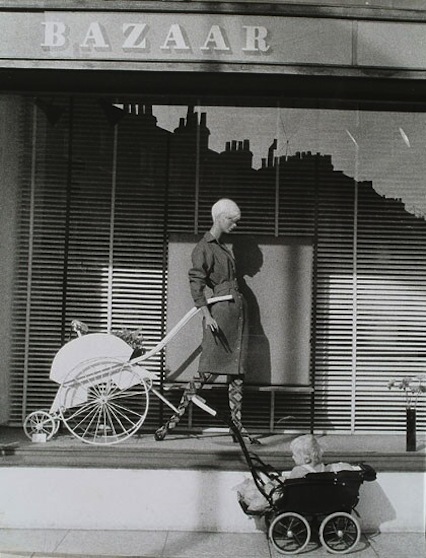
Bazaar
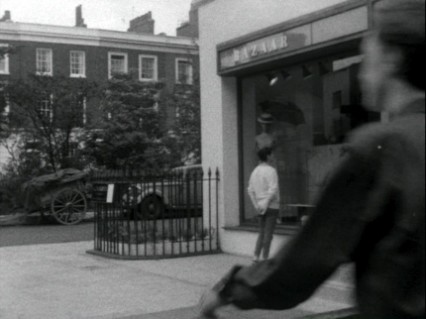
Bazaar in 1955
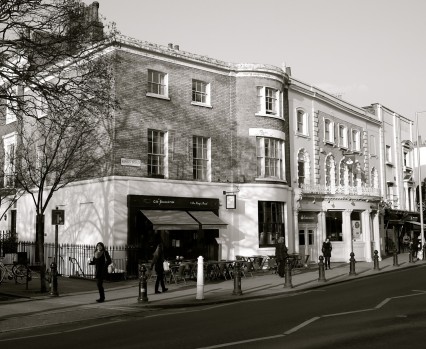
Bazaar and the Markham Arms (now a Santander bank) today
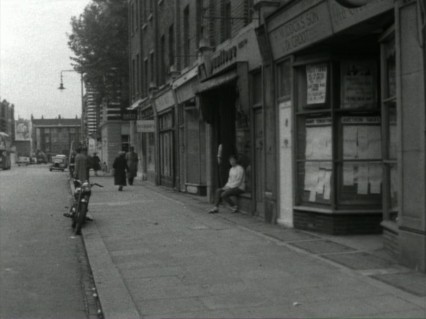
The King’s Road in 1958. The Bluebird Garage can be seen down the road at numbers 330-350. The garage was opened in 1923 and was the largest in Europe with room for 300 cars in the main garage.
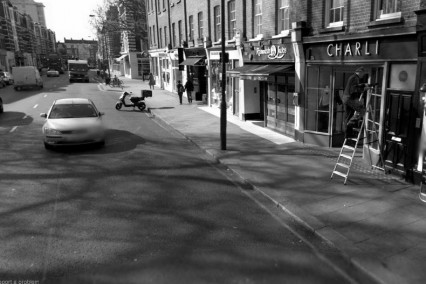
The King’s Road today-ish. The garage is now a restaurant of course.
The shop, which they called Bazaar, opened in November 1955 and was an almost immediate success with the stock flying out of the door. Although initially this was partly to do with naively selling their clothes and accessories too cheaply thus not only losing money on everything they sold but also upsetting the local shops and their wholesalers by undercutting the fixed retail prices.
It wasn’t long, however, that the trio of entrepreneurs realised that by luck they were on to a huge thing:
We were in at the beginning of a tremendous renaissance in fashion. It was not happening because of us. It was simply that, as things turned out, we were a part of it.
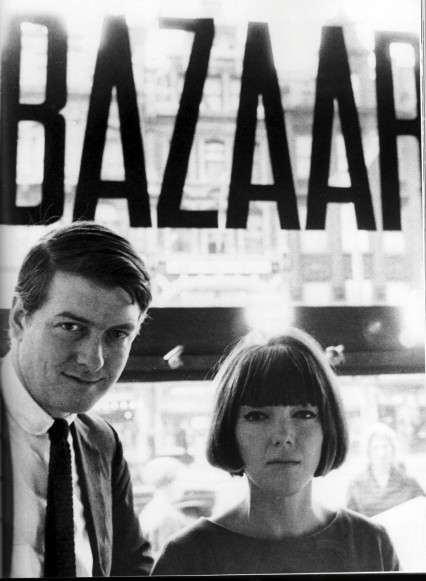
Mary Quant and Alexander Plunket Green
Mary Quant and APG worked incredibly hard. They had also opened a restaurant in the basement of Markham House which soon became the place to come to in Chelsea. But if they worked hard they also played hard – incredibly they were still both only twentyone.
According to Quant the couple always found time to visit the music hall shows at the Chelsea Palace theatre down the road from Bazaar. At the time the shows were often slightly risqué in nature. “We went once a week” said Mary. “the Chelsea Palace chorus girls wore very naughty fur bikini knickers.”
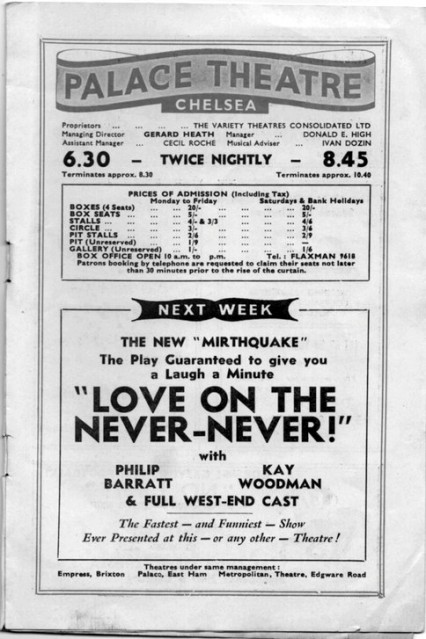
It must have been a very funny show…
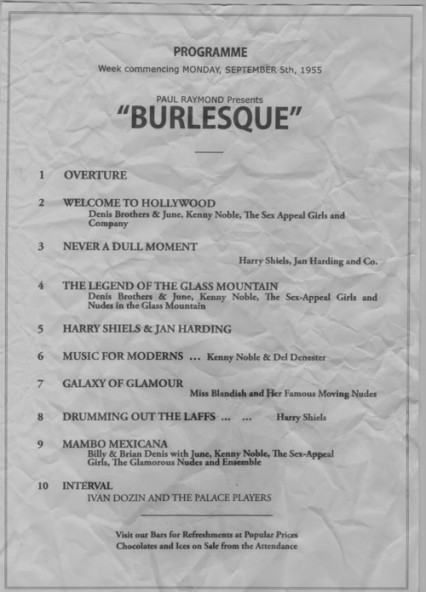
Paul Raymond’s ‘Burlesque’ was performed at the Chelsea Palace in 1955
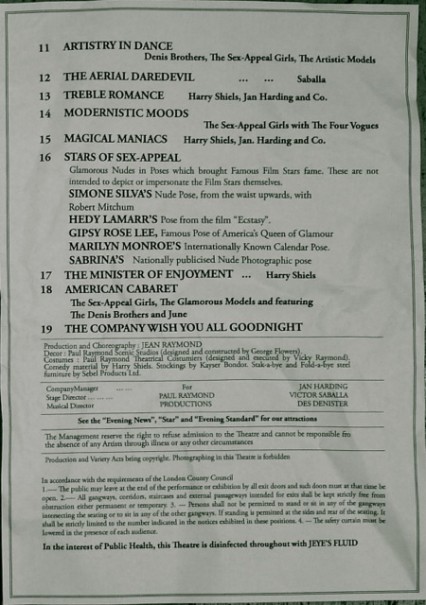
Burlesque by Paul Raymond – how kind of Jeye’s Fluid to sponsor the show (see the bottom of the bill)
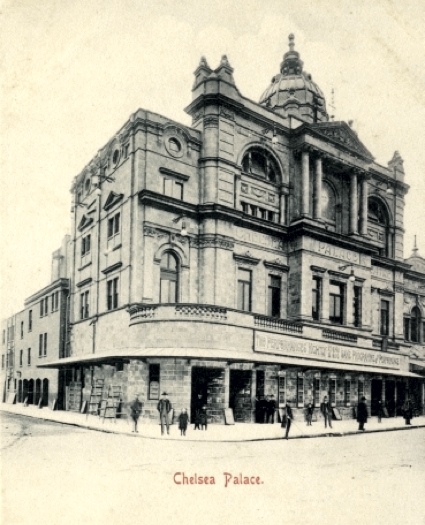
Chelsea Palace of Varieties
The Chelsea Palace of Varieties had opened for business in 1903 at 232-42 King’s Road on the corner of Sydney Street opposite the Town Hall. It seated 2524 people. Marie Lloyd appeared there in 1909 and performed an act so vulgar that a complaint was made to the London County Council.
By 1923 it started to be used as a cinema as well as showing straight plays and ballets. In 1925 it was taken over by Variety Theatres Consolidated and from then until its closure in March 1957 it presented live theatre, often of a risque nature. One of the shows put on in 1955 called ‘Burlesque’ was produced by Paul Raymond at the beginning of his career.
During the latter part of 1956 the Chelsea Palace ran a Radio Luxembourg talent competition and it was won for four weeks in a row by the Fantasie coffee shop regulars – the Chas McDevitt Skiffle Group. McDevitt described his flat in Chelsea at the time:
The flat I the King’s Road was an ideal pad in an ideal position. It provided a haven for many an itinerant jazzer, visiting American folkies and unsuspecting embryo groupies.
During the Chelsea Palace talent contests McDevitt met a twenty year old Glaswegian singer called Anne Wilson whose stage name was Nancy Whiskey.
Within six months Nancy Whiskey and McDevitt’s skiffle group had recorded a single called Freight Train. Amazingly, to most people concerned, it actually ended up in the charts on both sides of the Atlantic. They even appeared on the Ed Sullivan show in the US along side the Everly Brothers six years before the Beatles’ famous appearance.
The particularly British institution of skiffle only lasted two or three years perhaps but its influence was long-lasting. It was a do-it-yourself reaction to the bland mediocrity that many young people felt about the popular music of the time. This was echoed twenty years later in the mid-seventies with punk which had a lot of similarities with skiffle. The Kings Road played its part in that too.
With his new success Chas McDevitt opened his own coffee bar in Berwick Street in Soho which he called, of course, the Freight Train coffee bar.
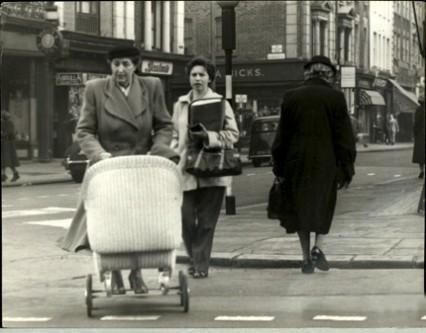
The swinging sixties were a bit of a myth this is what the King’s Road really looked like.
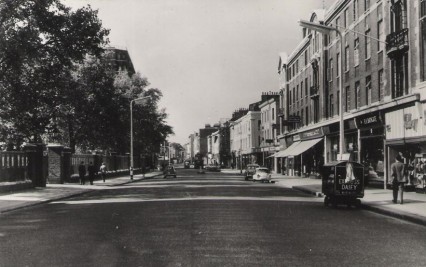
The King’s Road: Sundays weren’t for shopping in the Sixties
In 1957 the Chelsea Palace was renamed the Chelsea Granada and was to become a cinema. Although almost immediately the building was leased to Granada Television, within the same company, and the stalls in the theatre were replaced by a studio floor and it became Granada Studio 10 for the next eight years to augment the specially built studio complex in Manchester.
Sidney Bernstein, who with his brother Cecil owned Granada and which had recently won the franchise license to broadcast commercial television in the north west of England, numbered their studios by just using even numbers. This was simply so as to appear they owned more studios than they did.
It was actually the last of the London theatre to TV studio conversions. The Shepherd’s Bush Empire was now a BBC studio and Associated Television had already converted the Hackney Empire and the Wood Green Empire.
Incidentally it was at the Wood Green theatre in 1918 that the American magician known as Chung Ling Soo, (or William Robinson as he was really called) was tragically shot and fatally injured while performing his infamous act which involved catching (or not) a bullet between his teeth.
His last words were “Oh my God. Something’s happened. Lower the curtain.” It shocked everyone. Not so much that he had been shot but that he wasn’t Chinese and spoke perfect English.
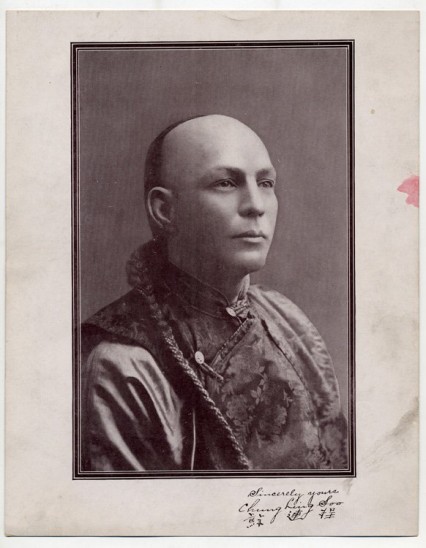
William Robinson, aka Chung Ling Soo, told almost no one that he wasn’t Chinese.
Boris Karloff wonders ‘Who Killed Chung Ling Soo’.
Studio 10 was used for the long running and extremely popular comedy series – the Army Game which ran for five years from 1957. An incredible 154 episodes were broadcast and the cast included many that would become household names for decades to come – Alfie Bass, Geoffrey Palmer, Bill Fraser, Dick Emery and Bernard Bresslaw and the writers included a young John Junkin, Marty Feldman and Barry Took.
The Army Game
Another very popular show that came from Granada’s King’s Road studio was the variety show called Chelsea at Nine. It ran for three series and purposely took advantage of the studio’s location in the capital to feature artists that were appearing in town. This meant that sometimes you would get one of the finest jazz musicians on earth playing after a comedian that would struggle to get on the end of a bill in Skegness.
Ella Fitzgerald once had to introduce an act who was appearing after her on the show as ‘the world’s greatest song and dance spoons man’. She laughed and laughed and simply couldn’t do it.
On the 23rd of February 1959 a very gaunt and very unsteady Billie Holiday was helped up on stage and performed three songs. Strange Fruit, Please Don’t Talk About Me When I’m Gone and I Loves You Porgy. Luckily for us the shows were by then being recorded but they proved to be the last she ever made and she died just five months later of cirrhosis of the liver in a New York hospital on 17th July. Only Strange Fruit and I Loves You Porgy still survive.
Billie Holiday – I Loves You Porgy
The Chelsea Palace was shamefully demolished by developers in 1966 after Granada vacated the premises. If one day you’re buying a sofa in Heals which is situated on the corner of the King’s Road and Sydney Street where the Chelsea Palace once stood, you might take a few moments to note that one of the world’s greatest ever singers sang a few songs maybe just where you’re standing.
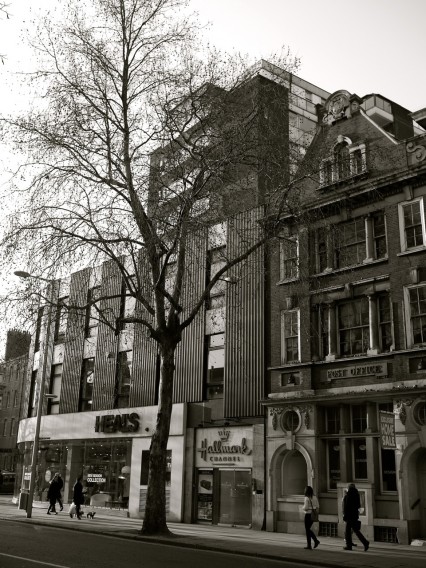
Heals today and not the Chelsea Palace
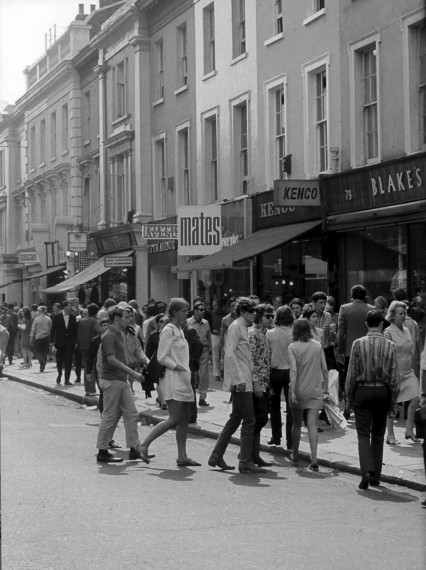
King’s Road in 1967
By the time the Chelsea Palace was demolished the miniskirt was ubiquitous on the King’s Road and pretty well everywhere else. In the ten years since she and APK had opened Bazaar she had become an international success. Quant and her clothes were an integral part of the so-called Swinging London. At the age of 32, dressed of course in a miniskirt, she received an OBE from the Queen.
Brilliant Pathé footage of Mary Quant in 1967
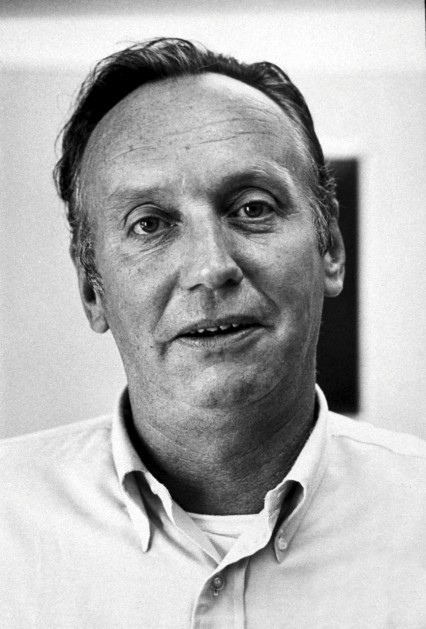
Loudon Wainwright who wrote a column for Life magazine and was based in London
In 1967 Loudon Wainwright, father of Loudon Wainwright III and grandfather to Rufus and Martha was working in London for Life magazine. In his column called ‘The View From Here’ he wrote:
Until very recently one of my least crucial handicaps has been a sort of built-in propriety which, for example has forced me to avert my eyes whenever I say that a lady was going to have difficulty with her skirt. By difficulty I mean that the skirt was threatening to go up too high – in a chair, in the wind, as its owner disembarked from a taxi.
Loudon continues…
I’m not sure how this propriety has survived the miniskirt fashions…but a few days of lovely spring weather in London have abolished it forever. The balmy sunshine there brought out the miniskirts in mind-reeling profusion. The town was positively atwinkle with thighs…the training of years misspent in the useless protection of female modesty betrayed me, and I had to learn how to stare. Yet soon the delightful truth that I was supposed to notice - burst upon me..
A few months later Mary Quant was interviewed in the Guardian
That’s the thing about today’s fashions – they’re sexy to look at but really more puritan than they’ve ever been. In European countries where they ban mini-skirts in the streets and say they’re an invitation to rape, they don’t understand about stocking tights underneath.
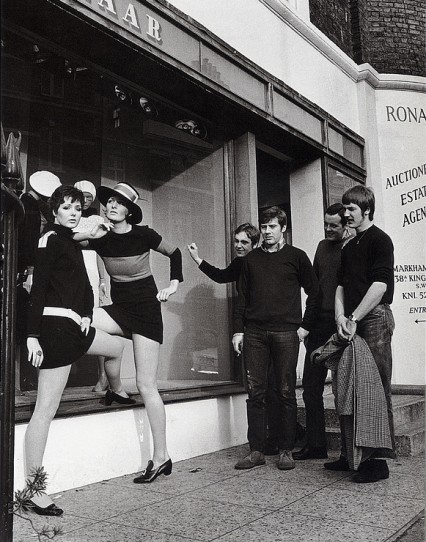
Miniskirts and men outside Bazaar in 1966/7
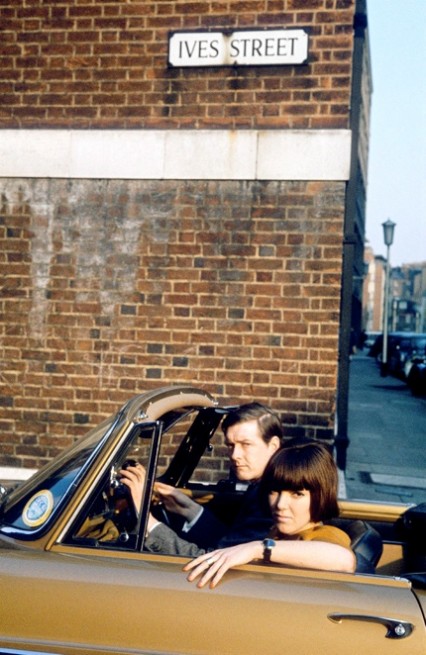
Mary Quant and APG in 1964
I recommend Max Décharné’s utterly fascinating book The King’s Road – The Rise and Fall of the Hippest Street in the World It’s packed with so much extraordinary information about this fascinating street in Chelsea and inspired this piece.
Tags: coffee, fashion, fifties, jazz, Kings Road, miniskirts, sixties, skiffle, teenagers
Fab piece – I first came into King’s Road around the time of punk – well 80/81 and have always remained slightly obsessed with the area. Even though the glory days were long gone – there was still some boho magic: World’s End, BOY!, The Great Gear Market …
I did piece, a historical walk around the King’s Road here if you a fancy a peep
http://channelmondo.blogspot.com/2009/03/magical-history-tour-of-kings-roads.html
Fascinating post, thank you. I work near the King’s Road now and am fascinated by its history in what’s now such a sanitised environment. Going to take a look at Mondo’s piece now too!
These two posts are fascinating reads. The barmaid in my local pub off Carnaby Street yesterday evening mentioned Benny Hill so on the same day I had read this article I was able to recount the details from the post. The lady was French so did not have any pre-formed prejudice that many British people seem to still have about Benny Hill since the eighties, he seems to still be despised by many people even if we live in age of Frankie Boyles, Jimmy Carr and Ricky Gervais. A friend sent me a few YouTube clips of Benny Hill’s shows in the 60′s, pre 1970′s chasing girls round the park, and I was quite surprised to find how satirical they were. Not many people, similar to Frankie Howard, could make you laugh just by looking at the camera.
I read recently that when Mary Quant and Plunkett-Green first started their shop they used to buy the fabrics and materials at full retail price from Harrods rather than a wholesale supplier, which must have cost a fortune. How they managed to keep going is quite remarkable.
‘Jane Birkin and a mini skirt’ – well that’s made my day!
Yet another great read, made my day when I checked and found a new article.
Fabulous piece – My first visit to the Kings Road (knowingly at least) must have been 76/77 and i remember being amazed at the sight of a punk girl with two rats on her shoulders, they didnt have those where I came from (the punk, we had plenty of rats…)
A tenuous connection with Mary Quant is that I had christmas drinks with her brother some years back, far from being anti establishment he turned out to be a wing commander in the RAF – I arrived about five minutes after Mary had left….. always seems to be the way !
Still my favorite blog! Always a lot of fascinating research presented in a droll and entertaining manner. Thank you, whoever you are!
Always worth waiting for, your new posts. This is no exception.
I’m old enough to have shopped at Bazaar while a schoolgirl: the swag being two dresses, one indeed rather Puritan in style as Mary herself pointed out, and the other much more obviously influenced by Courrèges. Loved ‘em both, and felt that blowing all my then savings on them was, ahem, entirely justified.
Wish I had them now: they’d be collectables, no?
Thanks for another wide-ranging and well-researched glimpse into London’s past, Rob. Here’s to the next!
Wonderful article.
I was born in the Worlds end part of Chelsea in 1948 which made me the ideal age of 12 at the beginning of the sixties and I grew up with this tidal wave of fashion, music and culture.
It is said that the young participants of the sixties never get old, they simply keep broadening their horizons.
In the 50′s as a family we lived in a requisition property in Sydney St and my Mum would take me to the Chelsea Palace to see Christmas Pantomines and shows…I remember seeing Peter Pan and Snow White there.
She would also take me to some of the live television programmes and I remember seeing ‘Spot that Tune’ there….(what was the name of the resident female singer on this show whose teenage twin sons went on to record a one hit wonder)?
One slight criticism is that the iconic ‘Granny takes a trip’ and shops like Cecil Gee, Lord John, Ravel’s and Aquascutum do not get a mention.
Wonderful stuff!
Tony the resident singer on the show was Marion Ryan and her sons were the Ryan twins.
Tony, her name was Marion Ryan.
Yes Bus Stop and Biba don’t get a mention either, nor Ossie Clark and his fluorescent pink poodle.
one small correction: Mary Q’s autobigraphy was ‘Quant by Quant’ (Cassell 1966).
Whoops, thank you. Don’t know why I wrote Quant On Quant when the book was in front of me. Changed it now.
A real memory jogger
I arrived in London in 77 and was a road sweeper on Kings Road (until I swept up a ‘proper job’). It was still a lively area having given birth to Punk and was a great mix of council flats, with Aston Martins across the road in the million pound flats. The eclectic mix of people gave it a real atmosphere. There was still a real buzz in the area, with lots of odd and bizarre shops selling very odd clothes.
I used sweep up past Mary Quant’s studio which was on one of the side roads and occasionally spotted her. She was that well known. Who could you picture nowadays?
Enjoy the blog. But please starting using “who” instead of “that” to refer to people. Strangely, the only time you use “who” is when you write “the act who” where “that” might have been appropriate.
What a shameful act of vandalism it was to destroy the Palace. It was clearly one of the most interesting buildings in the whole of the King’s Road.
I’ve often wondered what the old fire station must have looked like. The 60′s building currently looking tattier every year must surely be one of the most depressing buildings in the street.
I do have to pull you up one one thing. Your picture illustrating ‘The swinging sixties were a bit of a myth this is what the King’s Road really looked like’ is clearly a picture from the mid 50′s. I know you are using it to make a point that it wasn’t all dollybirds in rainbow mini’s – but it didn’t look quite that austete in the 60′s.
You are right the photo is from 1958. I’ll change what it says as I like the picture..
Phil H asked about the old Chelsea fire station…. The building still exists — it’s in South Parade, which is (strangely) at the north end of Chelsea Square, just round the corner from the hideous 1960s building he rightly criticises. The building’s in solid-looking red brick; there are no fire brigade signs on it but it’s identifiable by the big 1892 date on the pediment and you can see the shape of the original doors and arches at street level. I think it’s probably flats these days or could be part of the hospital next door. The “new” station was part of the rebuilding on the corner of Manresa Road and King’s Road which also incorporated Chelsea School of Art (now part of the University of the Arts and itself decamped to the old RAMC buildings next to Tate Britain) and involved demolition of a number of light industrial premises in Manresa Road. The building on the opposite corner of Manresa Road (part of King’s College London), built at the same time, has been extensively refurbished in recent years, so it’s to be hoped the fire station will also be spruced up at some point — though personally I’d prefer demolition!
The Chelsea Palace was sadly subsequently joined in its demolition by the Classic Cinema (formerly on the corner of Markham Street and replaced by a branch of Boots), which was an early 20th century building and said to have been one of the oldest purpose-built cinemas in London.
On a pedantic note, Bus Stop and Biba were originally in Kensington Church Street, so perhaps that’s why they were omitted from a posting on King’s Road. And I think the boutique was Aquarius not Aquascutum (a traditional supplier of overcoats and macintoshes, at least until recently)… Mind you, we left-over former residents of King’s Road in the 1960s can’t be expected to remember everything accurately….
Much like her punk counterpart Vivienne Westwood who sold her clothes in her husbands shop, Mary Quant opened a clothing shop named ‘Bazaar’ with her husband and an accountant in one of London’s busiest and most fashionable shopping areas, King’s Road.
I am a third year Sport Management student at Manchester Metropolitan University, I am extremely fascinated by the Kings Road, especially the 1960′s era. I am putting on an exhibition for my final project on ‘The Kings of the road’, I would like permission to maybe quote and reference some of your work as well a the possibility of displaying some of your fantastic pictures. I hope to hear from you soon,
Adam Faithi
08235263@stu.mmu.ac.uk
Fantastic article, my mother used to live on the Kings road and i remember hearing many stories about her time there. Thanks for helping to bring back so many wonderful memories.
Bernard Bresslaw! This is the only thing ive ever seen him in other than Carry on Films – great find there.
Another great post!
The girl on the left in the first photo is almost certainly Suzie Leggatt who, along with Andrew Loog Oldham, later the first manager of the Stones, worked as assistants to Mary Quant at her shop in the Kings Road. I knew Suzie as Zanna, the beautiful, neurotic, compassionate older sister of my childhood friend, Peter Leggatt. Suzie was Mary Quant’s muse and collaborator and with her broad social connections made sure that Quant’s fashions went viral quickly. The Leggatt’s were an interesting family, Hugh Leggatt, a step brother, advised the Palace on art matters, there was a very wealthy aunt who lived in Jamaica and a vague connection to Elizabeth Barrett Browning. I still remember Zanna, her laugh and her tempestuous personal life (I would stay with the family in the holidays). There are several pages on Zanna in Mary Quant’s autobiography. Tragically, Suzie/Zanna died in Tangiers from food poisoning in the mid 60′s.
I used to drink in the Markham Arms occasionally and remember seeing Christine Keeler there, at the height of her infamy. She was no shrinking violet!
Hi
I am looking for a Daniel who was an Assistant Manager at the Classic Cinema on the King’s Road in 1966? Does anybody know of him?
King’s road must have been fantastic in the old days.Does anyone know anything about the history of 358 King’s Road.My family lived there for a while.Would love to know what the building looked like.
I used to visit my aunt for holidays in Edith Grove must of always been trendy.i recall a cafe at Worlds End Kings road and seeing the first teddy boys outside it that was in1953 , I was 15 .i have just returned from visiting my grandaughter now living in Worlds End it was a lovely nostalgic visit .the house I stayed in Edith Grove looks exactly the same as it did all them years ago[ from outside) a very lovely house. I was still as fascinated by king road as I was then